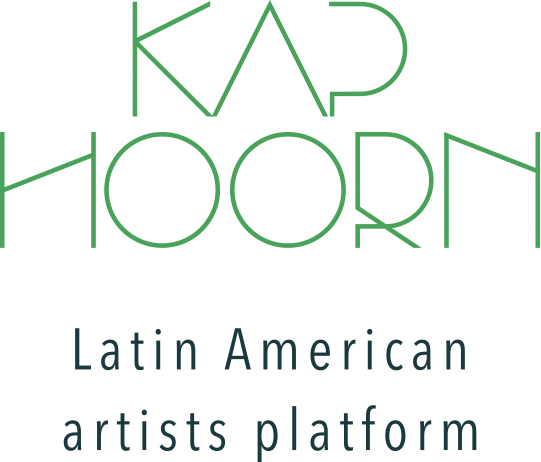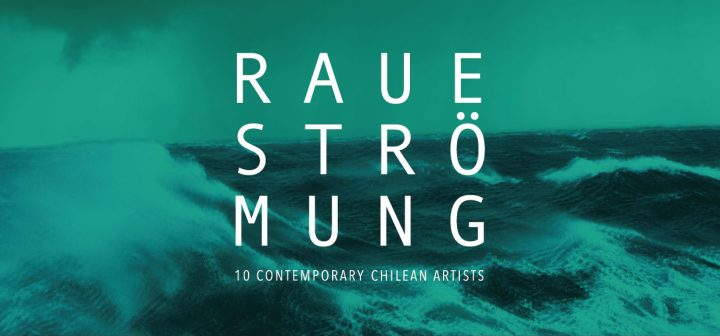Raue Strömung
Galerie Eigenheim – Berlin
From June 15th – 29th, 2017
Among the Mapuches, native of the territory that presently belongs to Chile, lies a cosmogonic myth of special significance for its symbolic content: the confrontation between the serpent of the waters, Cai Cai Vilu, and the serpent of the earth, Treng Treng Vilu. Making clear reference to the archetype of the universal flood, the story tells how Cai Cai Vilu tries to flood the earth and make it disappear, while it defends itself by retreating, forming the high summits of the Andes mountain range, and saving its inhabitants in Heights. In essential terms, this myth refers to the perma- nent tension between the formative and destructive forces of nature, and in a deeper sense, to a certain dialectic of opposition between order and chaos that constitutes the identity seal symbolically, not only from Chile, but from Latin America as a whole. Unlike Europe, where territory has the character of a landscape measured and domesticated by the facts of culture, our territory is a dynamic field of unstable friction between the will of abstract rational order and the cyclical overflow of the elemental forces, both geo-morphological and social. Abstraction and nature, order and chaos, reason and intuition: is it possible to achieve a reconciliation between these apparently opposing forces, not by mutual imposition, but by complementarity? An “alliance” between the serpents?
The present exhibition, Raue Strömung, reveals a possible way to this alliance, through the power of meaning of art. From the call of the Latin American artists’ platform, Kap Hoorn, 10 Chilean artists residing in Berlin build specially for the show a story of identity in which the conceptual geometric abstraction and the expressive potential of the matter are intertwined, configuring an indissoluble unit. This balance is achieved through a subtle conformation processes, which does not “force” the material substrate, but transforms it while respecting its own internal laws. The expressive qualities of materials as diverse as metal, glass, cloth, paper, ceramics, plasticine and objet trouvés are thus put into value, in a way that refers to the work of goldsmiths and craftsmen. Formal operations are simple: addition, cutting, folding, interlacing, drawing, and plotting. The resulting shapes that evoke these forming processes, are the footprint of their own strategy of material configu- ration. Among these traces, we also recognize those of silence, characteristic of any process of methodical and reflective work.
This know-how with the material is the starting point that enables artists to bring to life different imaginations related to the Latin American heritage, from a meta-his- torical perspective in which the boundaries between past, present and future tend to be diluted. A hybrid universe in which references to the mythical-symbolic cartographies of the conquest period, pre-Columbian iconographies, historical documentary records, memories and local traditions are interwoven. The relation between these elements of symbolic order and their support materials constitute a language assimilable to a certain form of “figurative abstraction”, with historical records in the local vanguards.
In summary, this set of works manages to articulate an identity speech related to Latin America that, transcending the common places of contingent political-social denunciation and picturesque exoticism, enables to project to the essential horizon of the Myth. On that horizon, the oppositions are overcome, and the “raw current” of the energy’s creative life returns to flow, channeled by the craft. In the work of these artists, abstraction and sensuality, will of order and expressive freedom, Brasilia and Macondo, these forces and primordial visions that in their dispute have shaped this complex reality that we call “Latin America”, are unified in a unique and singular alchemical synthesis: Raue Strömung.
Juan Almarza Anwandter
PhD candidate in Architecture Theory, Technische Universität Berlin, 2017
M.A. in Arts Theory and History , Universidad de Chile, 2016 Dipl. Ing. Architect, Pontificia Universidad Católica de Valparaíso, Chile, 1997


